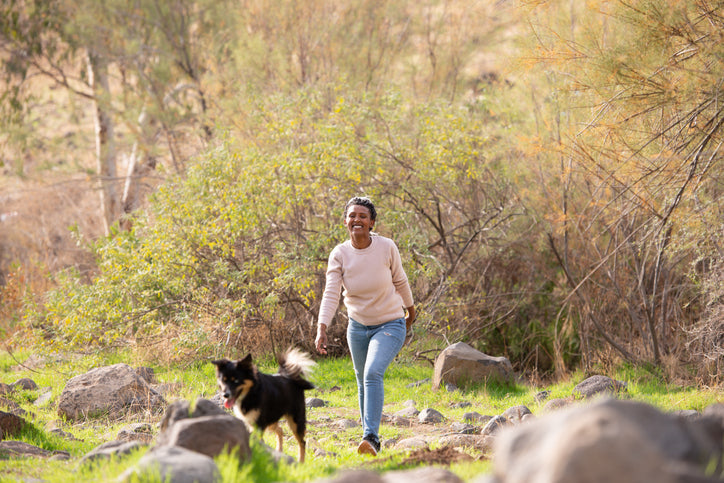
How to Transition Your Pet to Outdoor Adventures After Winter
After months of cold weather, snow, and cozy indoor days, the arrival of spring is the perfect time to get your pet back outside and into the fresh air. Whether it's hiking, running at the dog park, or just long walks in the neighborhood, outdoor adventures are essential for your pet’s physical and mental well-being. However, transitioning your pet from winter hibernation to outdoor activity requires a little planning and patience. Here’s how to safely ease your furry friend back into outdoor adventures after winter.
1. Start Slowly with Short Walks
If your pet has spent the winter curled up inside, it’s important to start slowly to avoid overexerting them. Begin with short walks around your neighborhood or a nearby park. Gradually increase the distance and duration as your pet builds up stamina. If you’re introducing your pet to a new outdoor activity, make sure to keep the sessions brief at first, allowing your pet to adjust to the change in routine.
2. Check Your Pet’s Fitness Level
Just like humans, pets can experience stiffness or soreness after being inactive for a while. Before jumping into more rigorous outdoor activities, assess your pet’s fitness level. If your pet has been inactive for an extended period, consider scheduling a check-up with your vet to ensure they are in good health and ready for more physical exertion. Your vet can also recommend a safe exercise plan tailored to your pet's breed and age.
3. Update Their Gear
As you head back outdoors, make sure your pet’s gear is ready for the season. Check their leash, collar, and harness for wear and tear. Ensure that their outdoor gear fits comfortably and securely, and replace anything that looks worn out. You may also want to invest in new equipment such as a sturdy harness or a reflective leash to ensure their safety during early morning or late evening adventures.
4. Watch for Spring Allergies
Spring can be a tough time for pets with seasonal allergies. As flowers bloom and pollen fills the air, it can lead to sneezing, itching, and watery eyes in your pet. Watch for signs of allergies during your outdoor adventures, especially if your pet is spending more time outside. If your pet starts showing signs of discomfort, consult your vet about allergy treatment options. You can also wipe your pet’s paws and coat after outdoor activities to remove pollen and other allergens.
5. Hydrate, Hydrate, Hydrate
Outdoor activities can be physically demanding, especially as the weather warms up. Make sure your pet has access to fresh water before, during, and after outdoor adventures. Bring a portable water bowl with you on walks or hikes to keep your pet hydrated. Dehydration can lead to fatigue, overheating, or even heatstroke, so always be mindful of their water intake, especially during warmer days.
6. Pace the Activity According to the Weather
Spring weather can be unpredictable, with temperature fluctuations from cool mornings to warmer afternoons. Be mindful of your pet’s limits when it comes to temperature and weather conditions. On particularly hot days, avoid strenuous exercise during peak heat and stick to early morning or late evening outings when it’s cooler. On cooler days, make sure your pet stays warm and dry, particularly if they have a short coat or are prone to getting cold.
7. Reintroduce Training and Commands
Outdoor adventures are a great time to practice training and reinforce commands with your pet. As you transition to more outdoor activities, reintroduce basic obedience commands like “sit,” “stay,” and “come” to keep your pet safe and well-behaved. You may also want to teach them new tricks or skills that are helpful for outdoor adventures, like walking politely on a leash or retrieving items. Reward them with treats and praise to make training a fun part of your outdoor time together.
8. Watch for Spring Hazards
With the arrival of spring, new outdoor hazards can emerge, such as insects, plants, or even wildlife. Make sure your pet is protected from ticks, fleas, and mosquitoes by using appropriate preventatives. Watch for signs of insect bites or stings, and check your pet for ticks after outdoor activities. Be mindful of plants and flowers that may be toxic to pets, as well as potentially dangerous wildlife, such as snakes or rodents, during your walks or hikes.
9. Have Fun with Outdoor Adventures
Outdoor activities aren’t just good for your pet’s health—they’re also a great way to bond and enjoy each other’s company. Whether you’re hiking a trail, playing fetch in the backyard, or simply going for a walk, take the time to enjoy the sights, sounds, and smells of the great outdoors together. This is a chance for your pet to explore, stay active, and have fun while building a stronger connection with you.
Embrace the Outdoors Together
The transition from winter to spring is the perfect time to get out and enjoy the world with your pet. With a little patience, the right gear, and some thoughtful preparation, your pet will be back to enjoying outdoor adventures in no time. So grab the leash, put on their harness, and take a step into the new season—your pet will be thrilled to explore with you!


